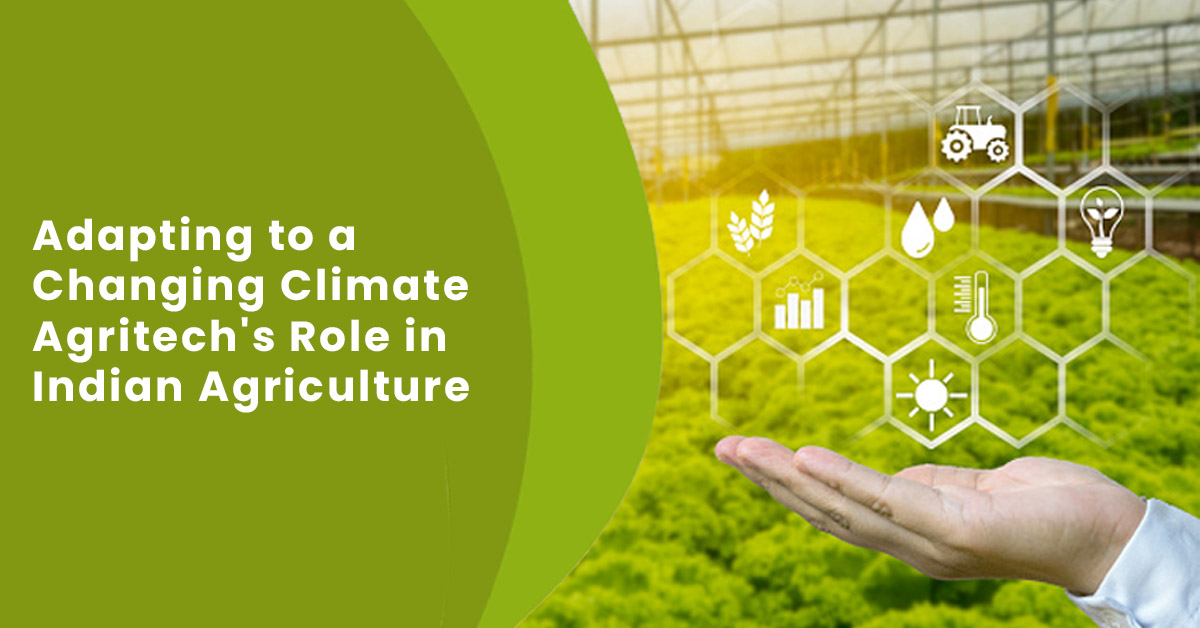Climate change has been a major challenge to Indian agriculture because it impacts the sustainability, and productivity of the entire industry. Indian farmers constantly try to overcome the unwanted impacts of climate change including intense heat stress, heavy downpours, huge pest outbreaks, unstoppable floods, and deadly droughts.
Indian agriculturalists opine that the role of agritech in Indian agriculture has increased manifold, and thus, farmers need to adopt (and to some extent have already adopted) such smart and resilient technologies to enhance their crop yields and reduce wastage.
Some of the technologies that can help Indian agriculture face climate change challenges are:
Biotechnological agriculture interventions
Biotechnology helps develop climate-resilient crops that can survive abiotic and biotic extremes including drought, diseases and pests, intense salinity, and temperature variations. For instance, CRISPR/Cas is a powerful tool used to amend the plant genome and introduce desirable traits like tolerance to droughts, diseases, and lack of nutrients.
Water management
Climate change in India, like the rest of the world, poses a serious challenge to Indian agriculture as it affects the productivity of crops, the availability of water, and the security of food. To overcome these adverse impacts of climate change, Indian farmers have adopted sustainable water management technologies to gain water-use efficiency, conserve soil potential and bring down greenhouse gas emissions.
Some of the water management technologies that can help Indian agriculture face climate change challenges are:
- Micro-irrigation systems: drip and sprinkler irrigation to deliver water directly to the plant roots. It saves water and energy, improves crop quality and yields along with controlled pest infestation.
- Rainwater harvesting structures: wells, farm ponds, tanks, and check dams collect and store rainwater for field irrigation and soil improvisation.
- Resource conservation practices: zero tillage, mulching, cover cropping, and crop residue management help farmers protect the soil from compaction, erosion, and evaporation. It also improves soil organic matter and fertility and sequesters carbon.
- Precision farming techniques: crop modeling, soil moisture sensors, laser land leveling, weather forecasting, and crop modeling help farmers optimize the use of pesticides, water, and fertilizers.
Artificial Intelligence (AI) and the Internet of Things (IoT)
Indian farmers can use AI and IoT to access real-time information and data-driven insights on weather conditions, soil health, crop development, pest tracing, and market demand. Such technologies enable accurate decisions in agricultural actions such as optimizing the use of water, nutrients, and fertilizers based on the particular needs of all crops and fields. AI and IoT improve the transparency and efficiency of the agricultural business to enable logistics management, quality assurance, and traceability.
Use of drones in agriculture
Climate change affects pest infestations, water availability, and crops. Drones enable farmers to adapt to climate challenges as they provide them with accurate and timely data on their fields including soil health, crop whereabouts, yield health, and weed density. The impact of drones is also positively observed in taking precise agricultural decisions like spraying pesticides and fertilizers, and irrigation water. Indian farmers use drones to increase their crop productivity, reduce overall costs, and curb the environmental adverse effects of agriculture.
Resource conservation technologies (RCTs)
RCTs are practices that are performed to preserve natural resources like energy, soil, and water while improving crop production and profitability. Some examples of RCTs include solar pumps, zero tillage, drip irrigation, permanent broad-based furrows, mulching, and integrated nutrient management. Such practices reduce soil erosion and prevent water loss, curb greenhouse gas emissions. Farmers in India can reduce input costs while improving soil fertility, water use efficiency, and crop yield.
Smart farming
Smart farming simply means an integrated approach combining contemporary digital technologies like sensors, GPS-powered location data through satellites, and robotic analytics along with traditional farming methods such as the use of organic seeds and soil to sow vegetables, fruits, and herbs. Smart farming aims to improve the quantity and quality of agricultural produce. Indian farmers use smart farming to monitor and control several aspects of crop production including harvesting and post-harvesting handling, fertilization, and irrigation. Smart farming helps farmers in India to access accurate and timely information on weather predictions, pest alerts, marketplace updates, and government schemes for agriculture in India.
BadiKheti supports the latest technologies that can help Indian farmers become more resilient, smarter, and inclusive to face various climate change challenges. However, it is important to realize Indian agriculture’s potential that comes through better farmer awareness and technology adoption that agriculturists and researchers in the agricultural sector can help with.
